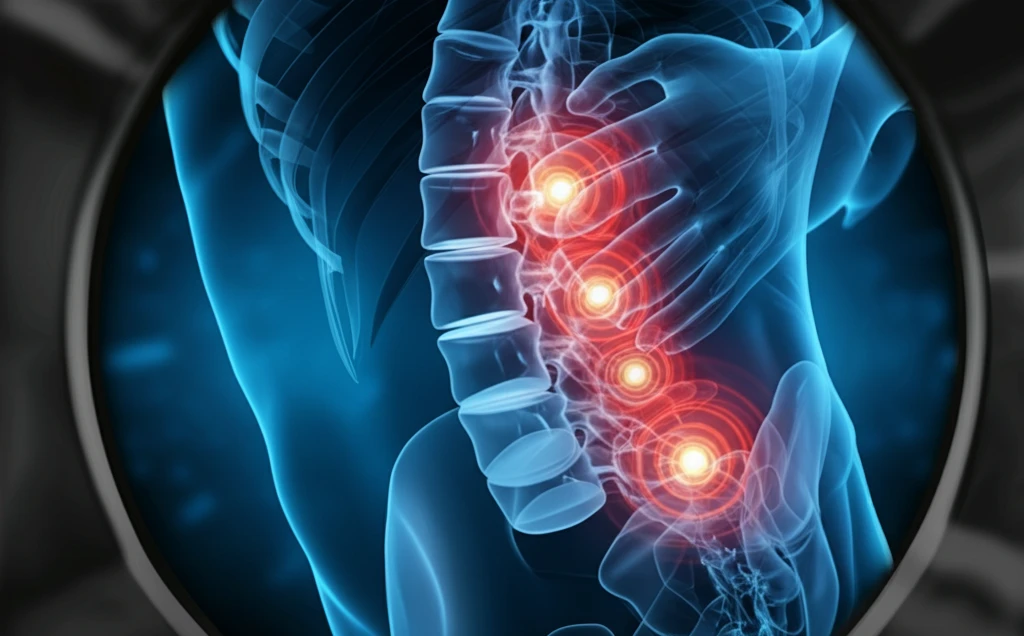
Unveiling the Spine's Secrets: How Endoscopic Visualization Is Changing Pain Management
"Discover how minimally invasive techniques are transforming the diagnosis and treatment of chronic back pain by visualizing the source of the problem."
For years, individuals experiencing chronic back pain have often found themselves in a cycle of temporary fixes, relying on treatments that mask the symptoms rather than address the root cause. Traditional methods of interventional pain management offer relief, but the duration of that relief depends heavily on the body's natural healing processes.
However, the landscape of spine care is changing. The ability to visualize the specific anatomical sources of pain, known as "patho-anatomy," using an endoscope, is revolutionizing how doctors approach diagnosis and treatment. By guiding surgical instruments through interventional needle trajectories, surgeons can now directly target and address the origins of pain.
This article explores how endoscopic visualization is opening new doors in the surgical treatment of lumbar spine pain. It explains the innovative techniques, specialized equipment, and potential benefits of this minimally invasive approach, offering hope for those seeking more effective and lasting solutions.
The Power of Seeing: Visualizing Pain Generators in the Spine

Endoscopic spine surgery utilizes specialized mobile cannulas, guided by real-time visualization, to precisely target the source of pain. This approach enables surgeons to perform decompression and ablation – procedures that relieve pressure on nerves and tissues – with greater accuracy. The development of new instruments, including specially configured endoscopes, access cannulas, and radiofrequency (RF) and laser technologies, further enhances the effectiveness of these surgical interventions.
- Enhanced Precision: Endoscopic visualization allows surgeons to see the exact source of pain, leading to more targeted and effective treatment.
- Minimally Invasive Approach: Endoscopic techniques require smaller incisions, resulting in less tissue damage, reduced pain, and faster recovery times compared to traditional open surgery.
- Broader Range of Treatment Options: Combining visualization with interventional techniques allows surgeons to address a wider variety of spinal conditions and pain generators.
A New Era of Spine Care: The Future is Visual
The integration of endoscopic spine surgery into standard practice requires surgeons to acquire new skills and embrace a different approach. By combining surgical expertise with interventional pain management techniques, and confirming results through rational treatment of patho-anatomy under local anesthesia, surgeons can provide more effective and lasting relief for patients suffering from chronic back pain. New procedures such as intradiscal therapy, disc augmentation and biologics will open the door to minimally invasive access to the lumbar spine without affecting and destabilizing the dorsal muscle column. Formal training or mentorship is needed to make this technology mainstream. New evolving technology facilitated by robotics and biologics will help evolve this procedure in the near future.
